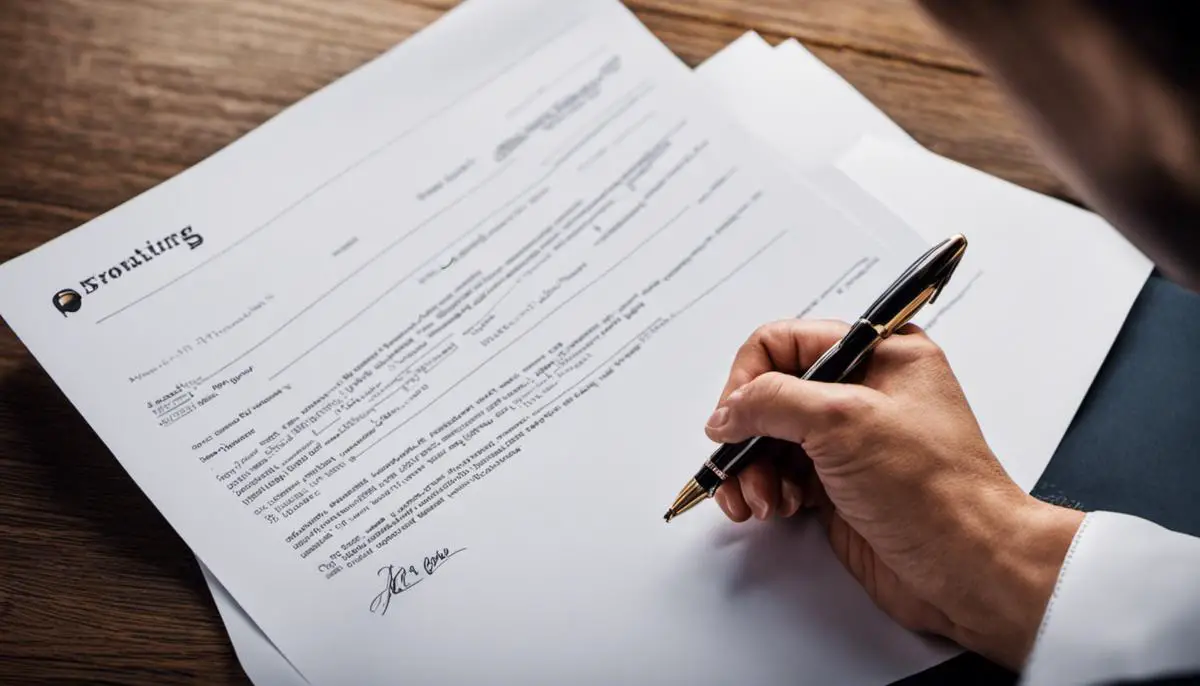Facing the daunting task of penning an impressive cover letter? Many applicants worry on mastering cover letter editing for fear one wrong move, and they will be cancelled from that job opportunity as a candidate. Fear not! This handy guide will walk you through the all-important components of a successful cover letter, from understanding its purpose and structure to fine-tuning its content.
With most employers attributing high value to a candidate’s cover letter, understanding and adhering to best cover letter practices can significantly enhance your chances of landing that dream job. This essay will enlighten you about the nuts and bolts of creating a structured cover letter and how you can make every sentence count.
Understanding Purpose and Structure
A competent cover letter operates as an enigmatic siren’s call within the realm of job application – an effective lure for potential employers, deftly outlining your professional prowess while graciously mirroring your personality in a corporate enclosure. It is fundamentally a showcase for demonstrating aptitude, ambition, and alignment, inherently designed to pique an employer’s interest, prompting them to consume your resume with rapt attention. Let’s dissect the dual purpose and the structure of this paramount document within today’s competitive job market.
At its most basic level, the cover letter has two primary functions which are neatly intertwined. First, it introduces the job candidate to the potential employer in a more personal and engaging manner than the standardized format of a resume or CV. It paints a vivid picture of the candidate’s career path, motivations and professional aspirations. Second, it serves as a tangible testament to the candidate’s compatibility with the role at hand. It offers a platform to traverse beyond mere job requirements, threading candidate’s expertise with company’s requisites and visions, a feat scarcely achievable within the confines of a resume.
The structure of a cover letter, akin to a three act play, is as pertinent as its content. It embodies the rhythm of an intricate dance, each element harmoniously interconnected to ensure the ultimate climax – inciting the employer to yearn for more.
The beginning of any well-crafted cover letter, the first act, comprises an introduction and succinct overview of the present motive. Fear not to engage in a bit of flattery, illuminating the appeal of the company, for employers appreciate candidates who exude meticulous understanding of their organization’s objectives.
The second act, the body of the letter, hones in on the candidate’s skills, experiences, and how these amalgamate with the job responsibilities. Pertinent anecdotes woven with evidence of impact can be transformative here. While a resume states facts, the cover letter narrates the story behind those facts.
The third and final act culminates with a call to action and a formal sign-off. The candidate should herein display their enthusiasm for an interview or further discussion, solidifying the bridging bond between candidate and potential employer.
Cannily crafted, the cover letter acts as the first step of the hiring dance, setting the rhythm and tone for subsequent steps. We do this by writing and editing a job cover letter over and over for tone. It is as much a persuasive sales document as it is an expressive narrative of one’s professional journey – an indispensable tool in the current competitive job market.

Fine-tuning the Content
Once the foundation of a well-structured and persuasive cover letter is laid, optimization becomes the ultimate goal. This process involves refining the wording and the content of the document, to ensure absolute clarity and relevance. These two elements play a pivotal role in distinguishing an effective cover letter from an ordinary one.
The core principle in optimizing a cover letter for clarity is avoiding verbosity and circumlocution. The tone should be crisp, succinct and focused on the job role. This is where an understanding of terminologies specific to the industry and the job profile comes in handy.
An economical use of language that is professionally astute often conveys a higher degree of proficiency in a given domain. For utmost clarity, a cover letter should be freed from unnecessary jargon, repetitive phrases, or complex sentences that serve to demean the message, rather than accentuate it.
Relevance in a well-edited cover letter gives recruiters the sense that you are focused and value their time. Every sentence and every word should correlate, directly or indirectly, to the job at hand. Prefacing the relevant experience with the requirement listed in the job posting will help keep the content pertinent, easily drawing the recruiter’s attention.
Furthermore, connect past achievements to future responsibilities using quantifiable proof to illustrate the impact made in previous roles. For instance, instead of saying, “I increased sales at my company,” say, “I initiated a marketing strategy that resulted in a 15% increase in annual sales.”
Another critical aspect in optimizing your cover letter is the fine-tuning of the narrative. Identifying a unique and engaging narrative that recruiters find relatable, initiates a conversation that continues during the interview. For instance, if one is applying for a technology role, speaking about a fascination with technology since childhood, followed by acquiring relevant education and experience, creates an engaging narrative. Avoid generic descriptions and focus on specifics, thus, guaranteeing a distinct and attention-capturing story.
Finally, it is crucial to understand that optimisation is not static. Each cover letter should be tailored for a specific job description or company. A generic cover letter fails to capture the nuances of individual roles or companies. Therefore, always align your cover letter to the specific needs and culture of the organization.
In conclusion, optimization of a cover letter merges art with science. The skill of eloquent storytelling must be harmonized with the science of apt skill and experience representation. This balance ensures clarity and relevance, and when achieved, maximizes the efficacy of the cover letter, serving as a testament to your capabilities and dedication.

Proofreading and Polishing
Diving further into the depth of proofreading and refining a cover letter, a meticulous and objective eye is indispensable. There are many strategies to edit a cover letter depending on the job. Proofreading functions as the final but integral frontier guarding against slip-ups that, like under-acknowledged interlopers, sabotage the credibility of a candidate. Without a properly proofread cover letter, even the most compelling narratives and adroitly detailed achievements can be unfortunately overshadowed by errors and banalities.
The initial step in proofreading mandates a temporal distance between writing and reviewing. This enables a refreshed perspective, which is instrumental in catching overlooked mistakes. Once removed from the immediate writing process, carefully scrutinize each sentence for grammar, punctuation, spelling, and typographical errors. Remember that automated grammar and spell checkers, while useful, do not possess the discernment of an acute human eye.
Next, examine the cover letter structure. Analyze it for fluidity and cohesiveness. The flow must be logical, bump-free, and capable of leading the reader naturally from an introductory thesis, through supportive arguments, to the final appeal.
Another imperative aspect of refinement is clarity. Confirm that the cover letter distinctly communicates your qualifications and job relevance without unnecessary embellishments. Every word must justify its place on the paper, and every sentence must contribute meaningfully to your candidature.
Once the basic elements have been addressed, delve into the nuances. Assess the tone of your cover letter. Is it respectful without being sycophantic? Does it reflect enthusiasm without appearing desperate? The subtle manipulation of language can help modulate the tone and strike the balance.
Subsequently, cross-verify the technical terminology, job-related jargon, and industry-specific language with reliable sources. An errant term or misrepresented concept can inadvertently signal ignorance, thereby eroding trust.
Lastly, invite someone from your network, preferably an individual well-versed in your target job or industry, to review your cover letter. Their perspective can prove invaluable in spotting industry-specific faux pas or suggesting additions that can heighten your cover letter’s appeal.
The exercise of proofreading and refining, admittedly, demands time, effort, and unwavering concentration. However, this investment pales in comparison to the potential damage inflicted by an error-riddled, lackluster cover letter. Thus, in the crucible of job applications, meticulous proofreading and iterative refinement of a cover letter not only streamline the narrative and showcase competence but also underscore your commitment and attentiveness to detail, traits highly treasured in any professional sphere.

Armed with these crucial insights on producing a superior cover letter, you can confidently venture into the job market. Every small detail from grammar and punctuation to tone and readability matters and could make a significant difference in your job application. You can use tools such as Grammarly to help with editing. Remember, a well-crafted cover letter is a golden key that can unlock numerous job opportunities. So, review, refine, polish, and present the best possible version of yourself on paper. Now, it’s time to put on your writing cap and get started!
